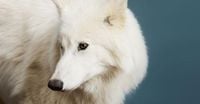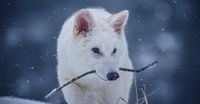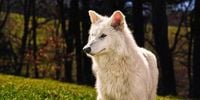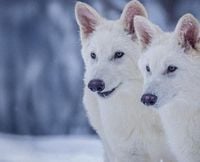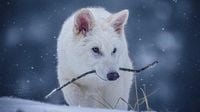In a remarkable achievement that seems to leap straight from the pages of fantasy, the dire wolf, a creature once thought to exist only in myth and popular culture, has made a stunning return from extinction. Colossal Biosciences, a Texas-based biotech company, announced the successful birth of three dire wolf pups, marking the world’s first instance of de-extinction. This groundbreaking event has captured the imagination of scientists and the public alike, as it represents a significant milestone in conservation efforts and genetic engineering.
The dire wolf, scientifically known as Aenocyon dirus, roamed North America for thousands of years before going extinct approximately 10,000 years ago. Once believed to be a mere figment of storytelling popularized by HBO’s hit series Game of Thrones, the dire wolf is now back in the spotlight, thanks to Colossal’s innovative use of advanced genetic techniques. The company successfully birthed two male pups, Romulus and Remus, on October 1, 2024, followed by a female pup named Khaleesi, born on January 30, 2025.
Colossal’s achievements in resurrecting the dire wolf are not just a scientific novelty; they represent a significant leap forward in the field of conservation biology. The pups were created through a meticulous process of genetic engineering, which involved extracting ancient DNA from two dire wolf fossils—a 13,000-year-old tooth found in Ohio and a 72,000-year-old ear bone unearthed in Idaho. By comparing this ancient DNA with the genome of modern gray wolves, scientists identified specific genes responsible for the dire wolf's unique traits, such as size and coat color.
According to Colossal’s Chief Science Officer, Beth Shapiro, the process required making 20 precise edits in the gray wolf genome, with 15 of those edits derived from the ancient dire wolf variants. This meticulous approach allowed the team to recreate physical characteristics of the dire wolf, including its distinctive white coat, larger size, and powerful jaws. "You want to be able to resurrect these phenotypes, but you don't want to do something that's going to be bad for the animal," Shapiro explained.
Romulus and Remus are already displaying behaviors typical of their wild ancestry. At just six months old, they measure nearly four feet long and weigh around 80 pounds, with the potential to grow even larger. Despite their size, the pups exhibit a level of caution and distance from humans, a trait more characteristic of wild wolves than domesticated pets. The pups currently reside in a secure, 2,000-acre ecological preserve, where they are closely monitored by a dedicated team of animal care professionals.
This groundbreaking work does not stop with the dire wolves. Colossal is also focused on conservation efforts for other endangered species. The company has successfully cloned four critically endangered red wolves, which are among the most endangered canids in the world. With fewer than 20 red wolves remaining in the wild, Colossal’s cloning efforts aim to enhance genetic diversity and bolster the population. The cloned red wolves now live in a separate area within the same preserve as the dire wolves.
Colossal’s ambitious plans extend beyond merely reviving extinct species. The company envisions creating a Pleistocene-type habitat in the northern regions of the Earth, where various extinct species, including the woolly mammoth and the dodo, could potentially thrive alongside the newly resurrected dire wolves. Co-founder Ben Lamm emphasized that the birth of the dire wolves is only the beginning of a larger mission to prevent extinction and restore ecological balance.
However, the path to de-extinction is not without its challenges and ethical considerations. Critics of genetic engineering caution against the potential consequences of reintroducing species into ecosystems that have changed significantly since their extinction. The dire wolf, once a top predator in its environment, may face difficulties adapting to modern landscapes that are vastly different from those of the Pleistocene era.
Moreover, the introduction of genetically engineered species raises concerns about ecological impacts and the potential for unintended consequences. Historical examples abound where introduced species have disrupted local ecosystems, leading to unforeseen challenges. As such, Colossal is committed to ensuring that their efforts are carefully monitored and evaluated.
The company’s work has garnered attention from both the scientific community and the public, with many viewing it as a beacon of hope in the face of the ongoing biodiversity crisis. The Center for Biological Diversity estimates that 30% of the planet’s genetic diversity could be lost by 2050, highlighting the urgency of conservation efforts.
Colossal’s mission is not solely focused on de-extinction; it also aims to leverage its technologies to prevent existing endangered species from slipping into oblivion. The company’s innovative approach to genetic engineering is seen as a vital tool in reversing the tide of extinction. As Lamm stated, "If we want a future that is both bionumerous and filled with people, we should be giving ourselves the opportunity to see what our big brains can do to reverse some of the bad things that we’ve done to the world already."
As the dire wolves continue to grow and adapt in their preserve, their existence serves as a reminder of the potential for science to reshape our understanding of conservation and the natural world. The return of the dire wolf is not just a triumph of technology; it is a call to action for humanity to take responsibility for the stewardship of our planet and its diverse inhabitants.
In the coming years, Colossal plans to expand its initiatives, potentially involving indigenous lands for the reintroduction of dire wolves into protected areas. The collaboration with Native American communities, such as the MHA Nation, underscores the cultural significance of the dire wolf and the importance of integrating traditional knowledge into modern conservation practices.
With the successful birth of Romulus, Remus, and Khaleesi, the world has witnessed the remarkable capabilities of genetic engineering and the potential for revitalizing lost species. As Colossal Biosciences continues its ambitious journey, the hope remains that these groundbreaking efforts will pave the way for a future where extinction is not an inevitability but a challenge that can be overcome.
